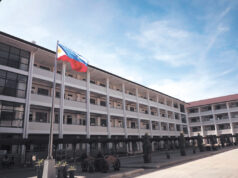The Philippines’ expanding mall experience

By Jomarc Angelo M. Corpuz, Special Features and Content Writer
Malls are undeniably a deeply embedded part of the Philippine social and cultural fabric. What’s supposed to be a place to shop has been transformed by Filipinos into a place of leisure, entertainment, and bonding. Aside from the usual branded stores, malls in the country can contain meeting halls, churches, and even government satellite offices, making the properties truly complete institutions by themselves.
Despite the dominance of e-commerce and the digital economy, Filipinos are still in love with the mall. According to the Philippine Retailers Association (PRA), the growth of the country’s retail industry is expected to reach up to 15% in revenue this year to around P5.4 trillion, driven by healthy remittances and a growing population.
“They say that people won’t come to malls anymore [because of AI], but Filipinos as a whole are still very social creatures. We’re all social citizens, and we go to malls to truly interact with one another. Although some purchases may shift online, we believe malls will continue to be places where people will still congregate,” PRA President Alice T. Liu was quoted as saying in a BusinessWorld report.
This powerful counter-narrative of malls as a societal place, rather than their often-considered consumer-driven nature, has allowed the retail scene to develop a batch of community-driven establishments in the midst of Metro Manila’s urban ecosystem. This new breed places its focus on experiences and interactions compared to profit and transactions in usual malls.
“Today’s mall-goers gravitate toward spaces that feel purposeful, interactive, and emotionally engaging. They’re no longer just looking for places to shop — they’re looking for places that add value to their day. Dining continues to be a major draw, but it’s the concepts with strong identity, thoughtful design, and a sense of discovery that resonate most. People want to ‘feel’ the brand the moment they step in,” Rockwell Land Vice-President for Retail Development Tin Coqueiro said in an email interview with BusinessWorld.
Colliers, an international real estate services firm, also notes that community-driven malls have the potential to redefine urban spaces in the Philippines by prioritizing community, creativity, and authentic experiences.
“The Philippine urban landscape is experiencing a vibrant transformation, with the rise of new concept community malls injecting fresh energy into the bustling commercial business districts (CBDs). Spaces like The Corner House in San Juan, Comuna PH, and Karrivin Plaza in Makati, and First United Building in Escolta are at the forefront of this evolution, redefining the very essence of the commercial experience,” the report said.
Aside from redefining the way consumers shop, malls are rapidly transitioning to become vibrant hubs for young, trend-conscious creatives. More and more malls serve as dynamic platforms where emerging artists, designers, and entrepreneurs can showcase their work, supported by flexible pop-up spaces and incubators for independent brands and startups.
Recent examples of these initiatives include Rockwell’s occasional exhibitions at the Power Plant Mall and a recent month-long “Art for Everyone” celebration across SM Supermalls.
These new developments show how malls in the Philippines are evolving into spaces that reflect the country’s social nature and creative energy. By supporting local talent and fostering community interaction, they rode the escalator to go beyond commerce and arrive at a new purpose as centers of culture, connection, and everyday life.
“There’s a growing demand for experiential concepts — boutique fitness, wellness clinics, specialty dining, concept stores, and immersive entertainment, that offer something you simply cannot replicate online,” Ms. Coqueiro said.
Retail in 2025
The Philippine retail sector took a huge blow both in revenue and in the number of visitors in 2020, mostly due to the effects brought by the pandemic. However, results from services firm Leechiu Property Consultants, Inc. show that the retail industry is gaining momentum, led by strong growth in the food and beverage (F&B) segment.
Current data shows F&B revenues are now 11% higher than pre-pandemic levels, outperforming other retail categories and reinforcing the sector’s position as a main driver of recovery in retail real estate. Similarly, Leechiu reports that the nation’s three largest mall operators reported a 19% rise in total revenues compared to 2019.
One possible rationale for this growth is the sector’s ability to foster ambiance, social connection, and lifestyle experiences that may be difficult to do online. Additionally, cashless payments, online reservations, loyalty apps, and integrated delivery platforms have become standard features, streamlining operations while improving customer engagement.
“The Filipino consumer has become significantly more sophisticated and globally attuned in recent years. You see this clearly in F&B — Filipinos are more adventurous, more discerning, and more willing to spend for elevated concepts. The arrival of the Michelin Guide has further validated the country’s culinary landscape and raised the bar for both local and international operators, proving that Filipino dining can compete on the world stage,” Ms. Coqueiro said.
As of early 2025, around 105 new malls are being developed nationwide, many featuring larger F&B components in their layouts and tenant plans. These areas are also benefiting from population growth, better infrastructure, and rising consumer spending.
“The continued expansion of malls into provincial areas is driven by the growth of the middle class, strong OFW-driven income, and increasingly sophisticated consumers who want access to the same quality of retail, dining, and lifestyle experiences found in major urban centers. These markets are no longer secondary — they have the spending power and lifestyle aspirations to support well-curated developments,” Ms. Coqueiro said.
While Metro Manila remains the primary hub for flagship dining concepts, developers are increasingly introducing food-focused areas in emerging regions such as Central Luzon, CALABARZON, Visayas, and Davao. According to Ms. Coqueiro, Rockwell studies how people live, socialize, and move within a city to understand whether the market is ready for a Rockwell development and what kind of experience would feel authentic to them.
“In Angeles, Pampanga, for example, we saw a vibrant community with a strong appreciation for good food, elevated environments, and quality retail. This insight guided how we designed Rockwell Center Nepo and shaped the retail concepts we’re introducing to ensure that what we build enhances and complements the Kapampangans’ lifestyle,” Ms. Coqueiro added.
All these indicators point to a retail landscape that is not just recovering, but actively expanding, signaling renewed consumer confidence and a strong return to physical shopping and dining experiences.
“But Philippine consumers are coming out. The malls are full again. The average purchasing amount may be lower, but people are coming out. So, we see a retail industry that will continue to grow, especially over the next two years,” PRA Chairman Roberto S. Claudio, Sr. said in a report.
Another strong statistic that shows how retail is doing concerns the occupancy levels of malls in the country. As with every other aspect of retail, vacancy rates plummeted during the pandemic, dipping to as low as 9.7% in the first quarter of 2020. However, recent numbers by Colliers show that the vacancy rate of malls in Metro Manila currently stands at 11.4%.
Despite this telling result, the firm still forecasts that mall vacancy in Metro Manila will decline to 9.5% by the third quarter of 2026. By the first quarter of 2027, the vacancy rate is projected to further drop to 8.2%, improving on the 9.3% level recorded in the third quarter of 2019.
“The Philippine retail scene continues to innovate, effectively exciting mallgoers and foreign brands. With retail spaces becoming more experiential, more Filipinos now go to brick-and-mortar malls and are enticed to stay longer and spend more,” Colliers Philippines Director and Head of Research Joey Roi H. Bondoc previously said.
Aside from this, Colliers notes that easing inflation, policy rate cuts, and the fast-approaching holiday season should support faster consumer spending in malls and other areas of the economy.
“In our view, the lower-than-expected inflation, holiday-induced spending, slightly improving consumer outlook, and the projected rise in remittances should support retail demand growth,” Colliers said.
Overall, the Philippine retail sector is entering a new phase of steady growth, driven by resilient consumer activity, expanding F&B developments, and a renewed enthusiasm for in-person experiences.



